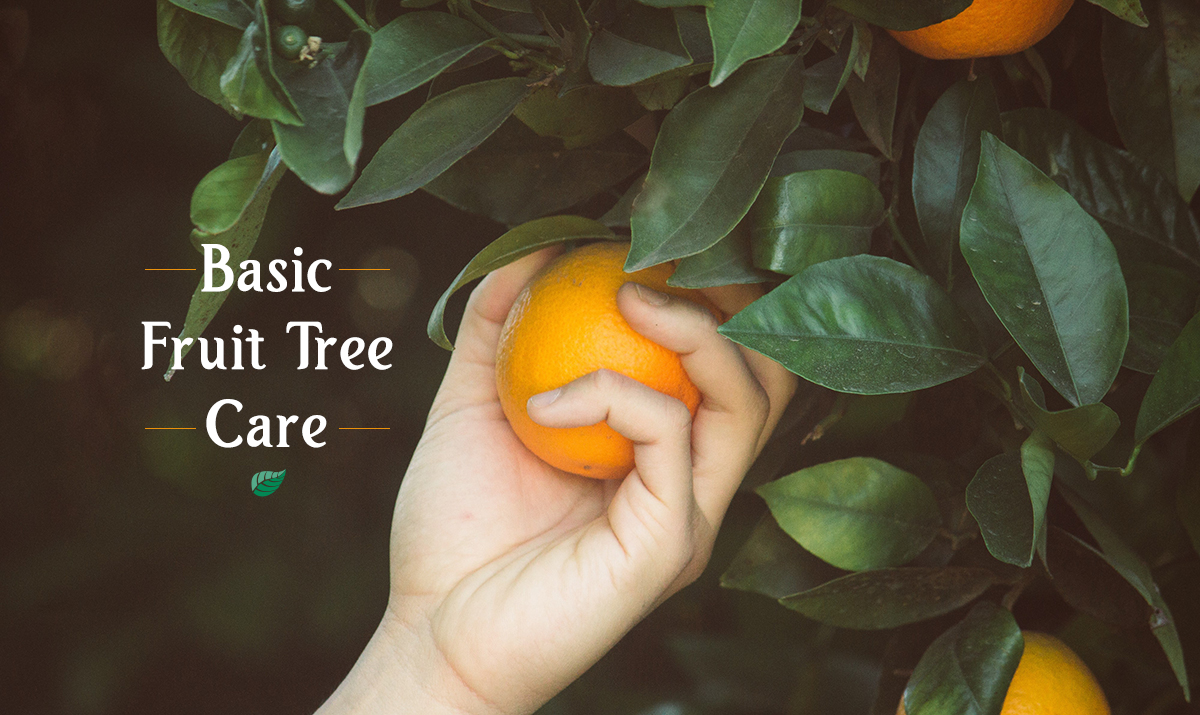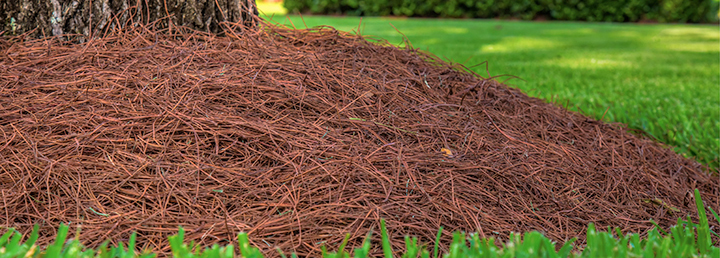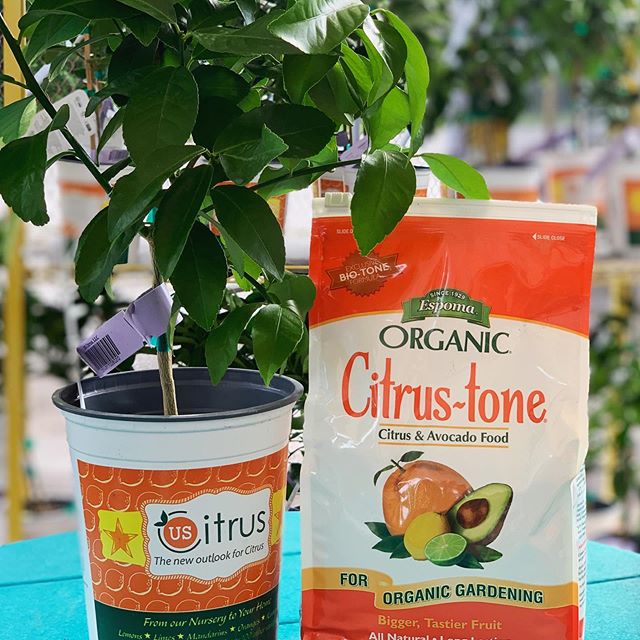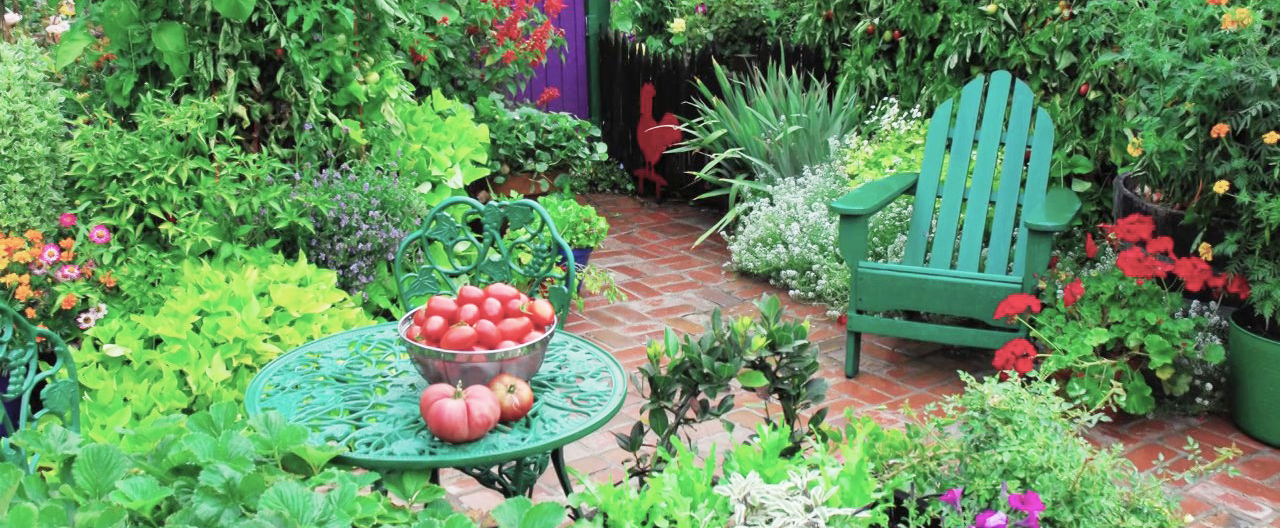
Fruit trees can be tricky to grow. While an ornamental plant need only survive to fulfill its function, a fruit tree generally needs to thrive before it will produce fruit. Basic fruit tree care is essentially the same as for other plants, it’s just more important that all those needs are consistently met if you want to harvest fruit. Follow these basics so your trees will have everything they need to gift you with delicious food.
Location Location Location
Fruit trees must have enough sunlight, at least 6 hours per day with no shade. Many even prefer to have more than 6 hours. Think of an open field (no shade trees in sight), that’s how much sun most fruit wants. If you have big trees and shade, make an analysis of your sun before you plant a fruit tree. Take an entire weekend day to monitor the yard. Check on the area in question every hour and record whether the spot is in direct sun or shade each time. If you have less than 6 hours of direct sun, fruit trees are not ideal for the location.
There is one big exception to the full sun rule. Most citrus will grow in less than full sun. They often even thrive in it. I like to grow citrus in the filtered light of mature oak or pine trees. The cover actually helps keep them warmer in the winter, which is a bonus.
I have a personal rule of thumb to determine if a shadier spot is ok for citrus. If there is enough light for turf grass to grow on the ground, even sparsely, then citrus will likely grow there. If it is too shady for grass to grow, it is too shady for citrus to thrive.
Expect shade grown citrus to grow slower than in full sun, but the plants will eventually produce just as much fruit. If you want fruit but don’t have full sun, stick to citrus.

Nearly all fruiting plants require well-drained soil. Low spots that hold water after rain and very heavy clay are poor choices for a home orchard. For hard clay soils you can try simply breaking up the ground, but this can create other problems in the future. If the surrounding soil remains rock hard, your planting hole may act as a basin that will hold water and cause root rot. The best solution in both cases is often to raise the ground level by trucking in large volumes of soil. Create mounds or rows of good quality, well-draining soil that rise above the wet or compacted ground.
Mayhaw trees are an exception to the wet soil rule. This native fruit tree thrives in bogs, swamps, and even ponds that flood well above the root zone.
Planting
- Fruit trees must be installed properly. Poor planting will make everything to come more difficult.
- The most common mistake at this point is the depth of planting. Trees and shrubs should always be planted with the top of the root ball being level with, or slightly above the surrounding soil. No soil should go on top of the plant’s root ball. Deeper is not better. The top of the root ball should be at the same level as the rest of the soil. If roots are planted too deep they can actually suffocate from lack of air.
- Checkout this video for a step by step tutorial, the same rules apply for trees as shrubs:

Insufficient water, by a vast majority, is the number one reason I see new plants fail. Plants in pots have totally different needs than wild plants, or plants that have been in the ground for a long time.
Plants in pots generally need to be watered everyday to stay healthy. It takes a long time (1-2 years on average) for newly planted trees and shrubs to grow enough roots to become “established”. Established plants are fully acclimated to their environment and they have extensive root systems that allows them to withstand temporary stresses like drought or heatwaves. Think of plants that are not yet established like little babies that need lots of care in good times, and even more in bad. Think of established plants as healthy adults. They still have needs, but they can endure hard times without perishing.
It’s impossible to say exactly how much to water in any specific location. Different soil types, sun exposure, wind, and many other factors determine how often water must be applied. In general, fruit trees do not want to dry out. Even mature trees may drop their fruit if the soil becomes too dry for a period of time. You have to learn from experience how much to water in each location. Keep a close eye on your trees. If the leaves are wilting, add more water. If the soil ends up soggy or flooded, water less. You’ll figure it out if you just keep your eyes open keep trying.
Mulch
Mulch is the gardeners best friend! It helps keep moisture in the soil, it suppresses weeds, and it decomposes which improves soil quality. Mulch rings should be large to have the greatest impact. I like to see mulch zones 6’-8’ wide. That’s 3’-4’ out from the tree in all directions. A small mulch zone helps a little, but a big one does so much more.

I find any organic material works. Anything that will breakdown eventually is ok. Pine straw, pine bark, woodchips, leaves, grass clippings, or even partially decomposed compost. Each type of mulch has different characteristics, but they all serve the same function. Use what you have access to, and what you like the look of.
Mulch layers should be 4 inches thick, once it has naturally compressed and settled after rain or watering. Reapply 1-2 times per year to maintain this depth. Always keep mulch away from the base of trunks. Keep a few inches of bare ground around the base of each plant to prevent disease.
This video will teach you everything there is to know about mulch from a true expert:
Fertilizer
- Fertilizer is critical if you want fruit trees to produce.
- The University of Florida has many online resources that will instruct you when to apply fertilizer for each type of fruit tree.
- Any type of fertilizer can work as long as enough is applied. Always read the label on each bag of fertilizer and apply the right amount.

- Fruit trees need ample soil nutrients to thrive and produce food. Very few soils are rich enough to naturally supply sufficient nutrients. Yearly applications of fertilizer will add what your trees need. Tallahassee Nurseries recommends organic fertilizer because it releases slowly, will not burn plants, and reduced the risk of runoff.
Simple Pest Control
Our primary fruit tree supplier recommends treating all fruit trees with a Horticultural Oil each winter to control pests.
Horticultural Oils are safe and effective products that kill small insects and their eggs by suffocating them with a layer of oil. There are certified organic plant-based options, as well as petroleum-based products on the market. Most Horticultural Oils are targeted products that do no harm to bees or other pollinators. Applying Horticultural Oil in the winter will kill any eggs or larvae that are present on the tree. This means you will start each spring free of existing pest populations.
Next Level Care
If you master the above basics, you ought to have some pretty healthy trees. In general, healthy fruit trees will produce fruit, though it can take a number of years to get there.
 Once you’ve mastered these skills you can look into these next level fruit care techniques to take your home orchard to the professional level:
Once you’ve mastered these skills you can look into these next level fruit care techniques to take your home orchard to the professional level:
- Pruning and Training
- Companion Planting
- Edible Landscape Design
- Advanced Pest Management
- Cover Crops to Build Soil
…if you love to grow fruit, you’ll never run out of things to learn!
*This article was written by Jonathan Burns (Tallahassee Nurseries Outdoor Manager, FNGLA Florida Certified Horticulture Professional) using information published by the University of Florida combined with years of personal observations growing in the Tallahassee area.

